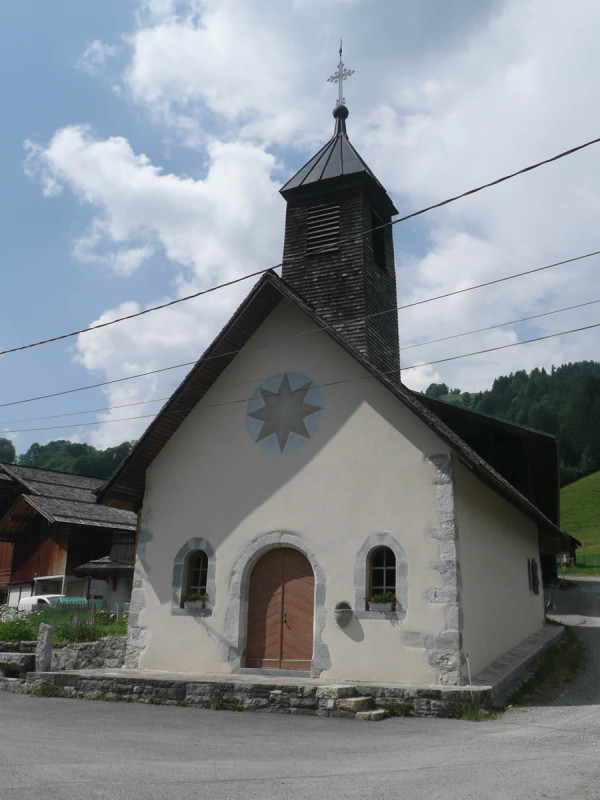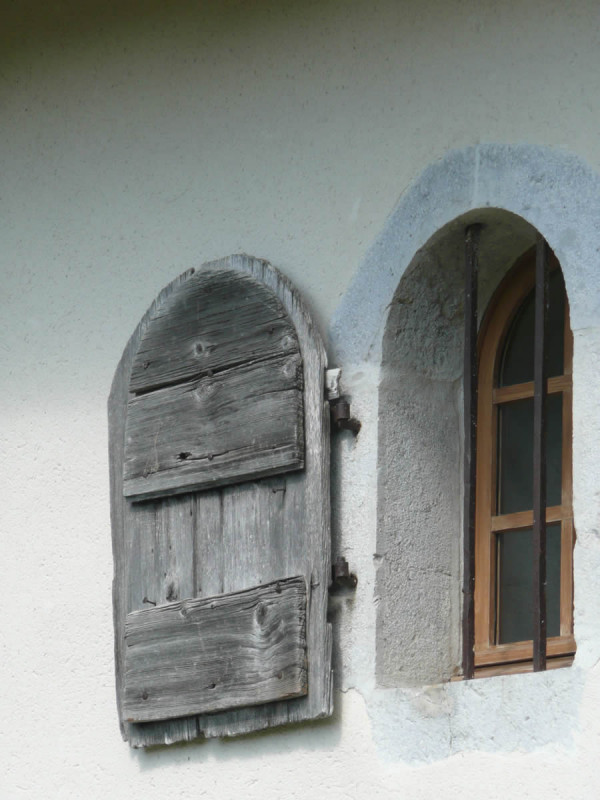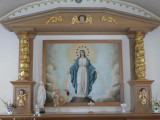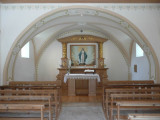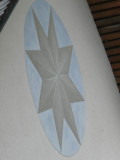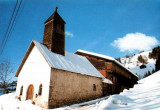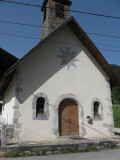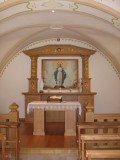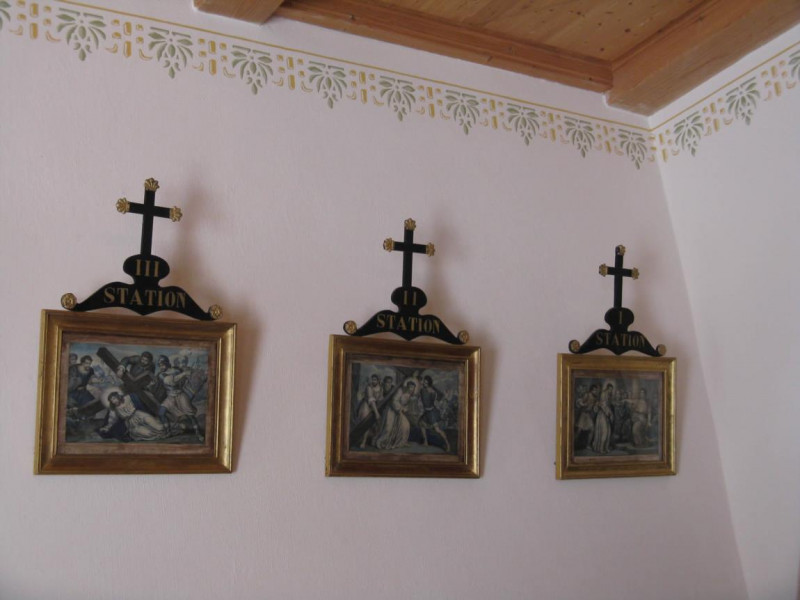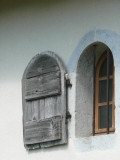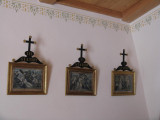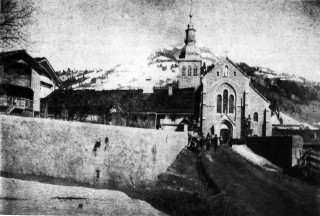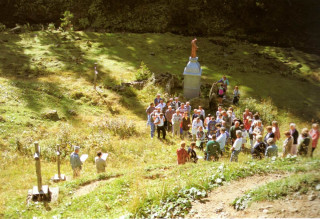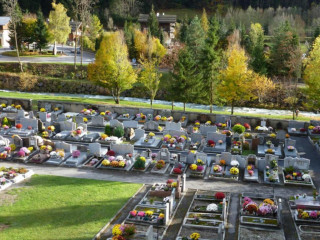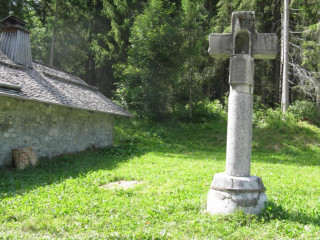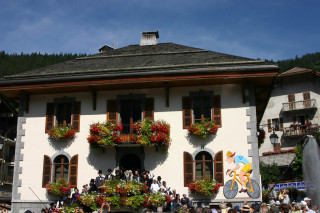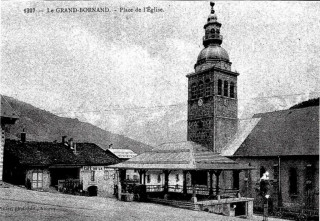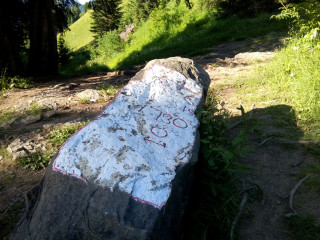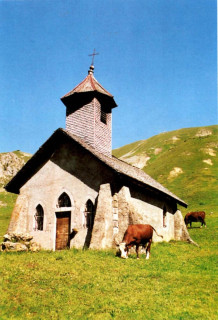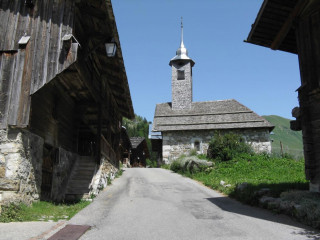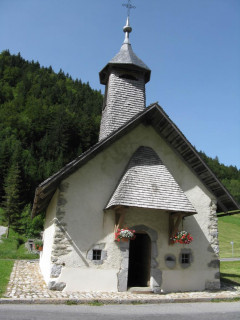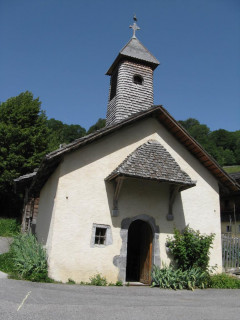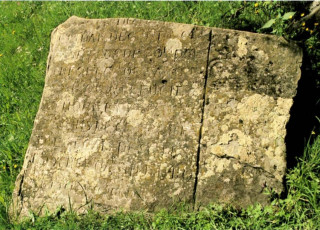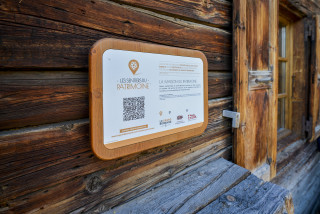Chapel of Le Bouchet
Contact
Route de la chapelle du Bouchet
Vallée du Bouchet
74450
Le Grand-Bornand
Phone : +33 4 50 02 79 18
The chapel of Le Bouchet, in the heart of the Bouchet valley, was founded in 1704 after a flood. It boasts a beautiful altarpiece, dating back to the XVIII century.
In 1702, two years after the founding of the chapel of Les Plans, the chapel of Le Bouchet was built by 10 of the local residents following a flood. The land on which the chapel is built was donated by Jean Perrissin-Pirasset. The chapel was placed under the patronage of the Holy Virgin, of St Anthony of Padua and of the Guardian Angel. The altarpiece, dating back to the XVIII century, testifies to this origin.
Although the altar and the altarpiece are contemporary, other items have been preserved which date from the Baroque era: two twisted posts and cherubs, most likely dating from the XVIII century.
The central picture, however, dates from the XX century. It represents Our Lady of Assumption, with a picture of a starry Virgin, dressed in blue and white, crushing the serpent of sin.
On the façade of the chapel there are 2 arched windows and above the portal is an 8-branched rose window. Standing on a four-sided base, the bell tower rises above the chapel and has a ball and cross at its summit. Hanging in the tower is a bronze bell which was cast by the Paccard foundry in 1844. It replaced an older bell which had been cast in 1719. Jean Pierre Perillat Monet acted as the bell`s godfather and Jeannine Perillat-Monet as its godmother.
The chapel was renovated in 1927 and the bell tower in 1981. In 2010, the bell was electrified and the outside wall was restored with pebbledash and wall ties. The inside of the chapel was repainted, greatly improving the lighting for viewing the furniture and the Stations of the Cross.
Although the altar and the altarpiece are contemporary, other items have been preserved which date from the Baroque era: two twisted posts and cherubs, most likely dating from the XVIII century.
The central picture, however, dates from the XX century. It represents Our Lady of Assumption, with a picture of a starry Virgin, dressed in blue and white, crushing the serpent of sin.
On the façade of the chapel there are 2 arched windows and above the portal is an 8-branched rose window. Standing on a four-sided base, the bell tower rises above the chapel and has a ball and cross at its summit. Hanging in the tower is a bronze bell which was cast by the Paccard foundry in 1844. It replaced an older bell which had been cast in 1719. Jean Pierre Perillat Monet acted as the bell`s godfather and Jeannine Perillat-Monet as its godmother.
The chapel was renovated in 1927 and the bell tower in 1981. In 2010, the bell was electrified and the outside wall was restored with pebbledash and wall ties. The inside of the chapel was repainted, greatly improving the lighting for viewing the furniture and the Stations of the Cross.
All year round
Description
- Religious heritage :
- Religious heritage
- Chapel
- Period :
- 18th C
- 19th C
Facilities and services
- Parking :
- Parking
- SITRA services :
- Services
- Services
- Services
- Services
- Services
- Services
To note
- Type of SITRA offer :
- Indoor
- Bad weather alternative
- Accessibility criteria for people with reduced mobility :
- Accessible for wheelchairs with assistance
- Possibility of drop-off in front of the site
Localisation
FICHE_INFO_SIMPLE_LIBELLE_DESTINATION
Chapelle du Bouchet
Route de la chapelle du Bouchet
Vallée du Bouchet
74450
Le Grand-Bornand
GPS coordinates
Latitude : 45.937755
Longitude : 6.46023
Tarifs
Free
View also
After 60 years of building work, undertaken and financed by the local community,it was consecrated in 1877. Built in the neo-gothic style of the XIX century, the architecture is typical of the golden age of the Catholic church.
The Stations of the Cross pilgrimage at La Duche originated in 1888, linking the chapel of La Duche with St Bruno's oratory, the site of a miraculous spring.
The original cemetery was situated for a long time immediately around the church. In the mid-XX century, it had to be relocated so that a new village square could be built in front of the Tourist Office, the Town Hall and the church.
The cross at Le Clos du Pin is unusual for two reasons : firstly, this stone cross is the oldest of all the Le Grand Bornand crosses (dating from 1500) and secondly, and for the same reason, it has been classified since 1944 as a heritage monument.
The Town Hall is a stone building, typical of early XX century architecture. It houses all the municipal services and the meeting room for the village council.
The weekly market at the Grenette, the old grain market of Le Grand Bornand, characterizes the heart of the old town square. All sorts of concerts and events also take place here, such as concerts given by the local brass band and many local celebrations.
The inscribed border stone, at the foot of the dale of Tardevant, marks the limit between the villages of Le Grand Bornand and La Clusaz. This stone is about 1m. long and is dated 1755.
The chapel of la Duche is the oldest of Grand Bornand. Based in the end of the XVIIth century,it is reconstructed at the end of the XIXth century. Itis dedicated in particular to several agrarian saints: saint Anne, saint Grat and saint Guérin.
Founded in 1677, the chapel is nestled in the heart of the old village of Le Chinaillon. Despite major renovation work to the building in 1977, it has retained its traditional appearance.
Located in the heart of the hamlet of Les Plans, the chapel of the same name was founded in 1702 after the flooding of the Borne river. From the chapel there is a wonderful view over the Aravis mountain chain.
Standing above the village of Le Grand Bornand, with panoramic views over the Aravis chain, the chapel of Le Nant Robert is well worth seeing. It was founded in 1762 and renovated on several occasions during the course of the XX century.
At the end of the Bouchet valley, just above the hamlet of Lormay, there is a stone testifying to events which took place during the French Revolution : priests refusing to swear allegiance to the Constitution were hidden by the local population.
04 50 02 78 00
During your walks, use your mobile phone to discover in an interactive way all the richness of Le Grand-Bornand.

